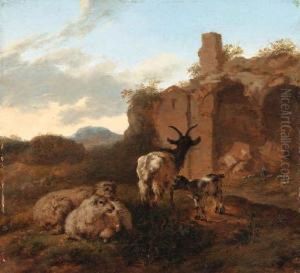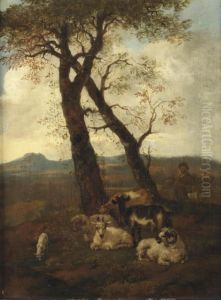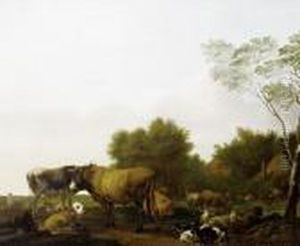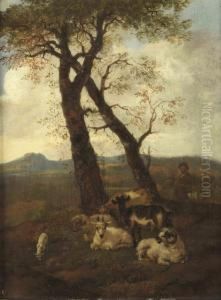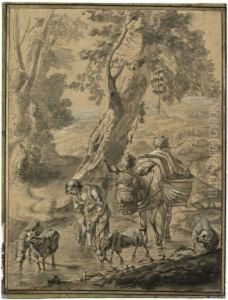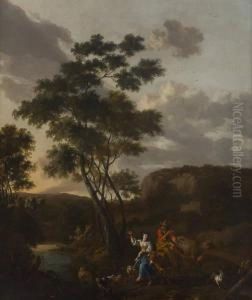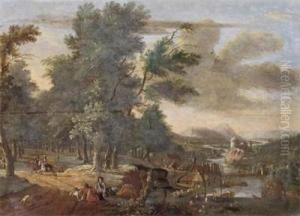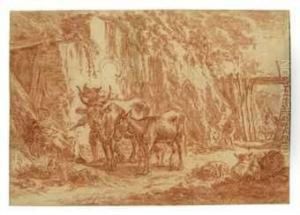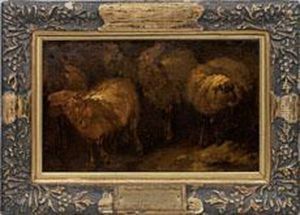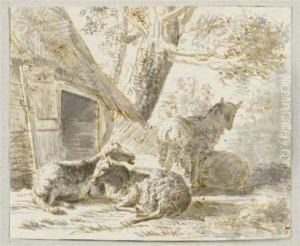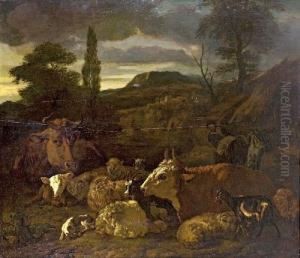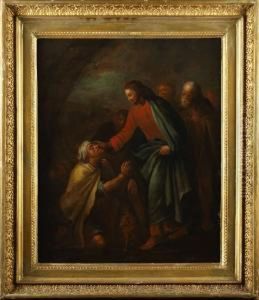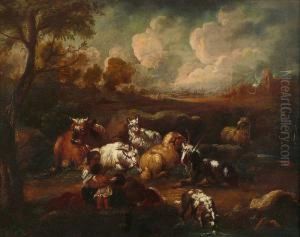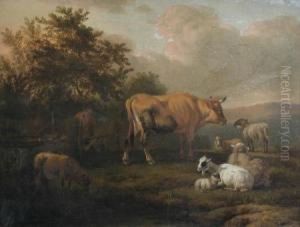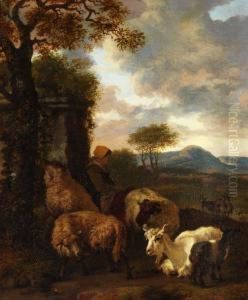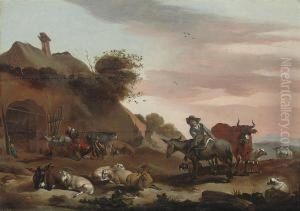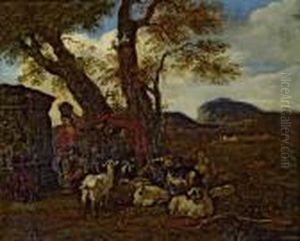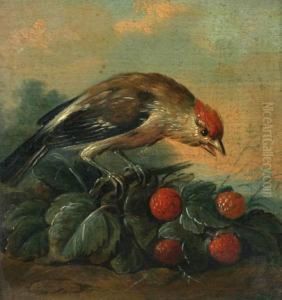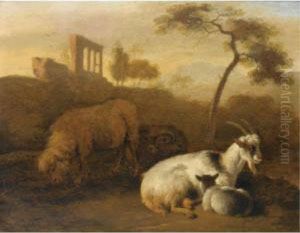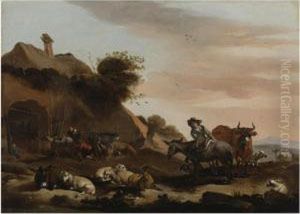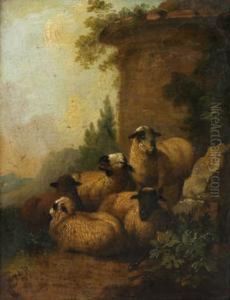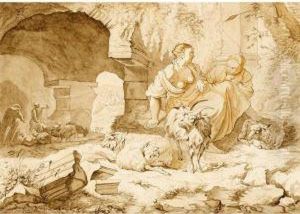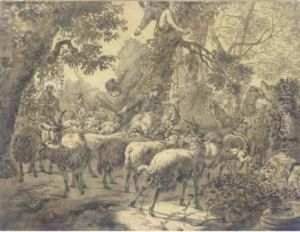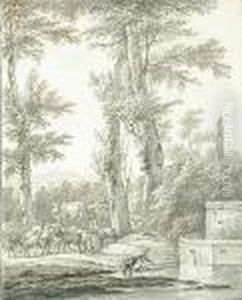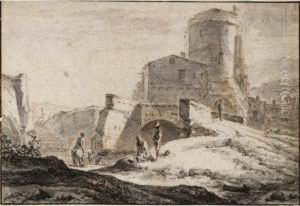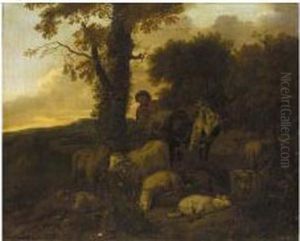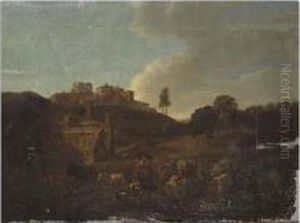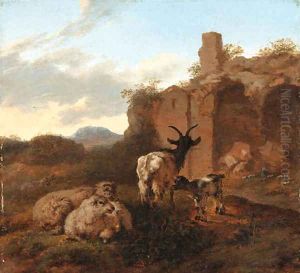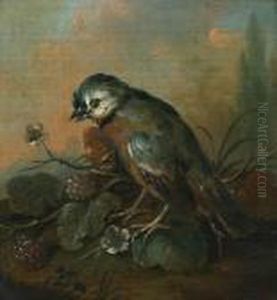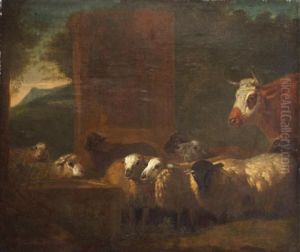Jacob Van Der Does I Paintings
Jacob van der Does was a Dutch Golden Age painter and poet. Born on March 4, 1623, in The Hague, Netherlands, he was the son of the lawyer and poet Jacob van der Does and his wife, Maria van Reygersberch. Van der Does is primarily known for his work as a landscape painter and for his contributions to the pastoral genre.
He received his early training from the painter Cornelis van Poelenburch in Utrecht, who was known for his Italianate landscapes. These early influences are evident in van der Does's work, which often featured Italian landscapes, despite the fact that he himself never visited Italy.
In 1640, van der Does became a member of the Guild of St. Luke in The Hague, which was a common professional association for painters, and he served as its headman in 1656. He was also a founder and deacon of the Confrerie Pictura, an organization set up by local artists in The Hague in 1656, as an alternative to the Guild system, which was seen as too restrictive. This Confrerie was important in the development of the art community in The Hague and helped to establish the city as an artistic center.
Jacob van der Does's paintings were characterized by their peaceful rural scenes, often including animals such as sheep and goats, which he rendered with a delicate touch. His work reflects the serene and idyllic aspects of rural life, and he is also noted for his skill in depicting the various textures of fur and foliage, which brought a lifelike quality to his work.
Despite his artistic achievements, there is not a great deal of documentation on van der Does's life, and he remains a relatively obscure figure within the broader spectrum of Dutch Golden Age painters. Nevertheless, his contributions to Dutch landscape painting are recognized by art historians and his works are held in various museum collections.
Jacob van der Does died on November 17, 1673, in The Hague. His legacy is carried on through the paintings that continue to be admired for their tranquility and naturalistic beauty.
